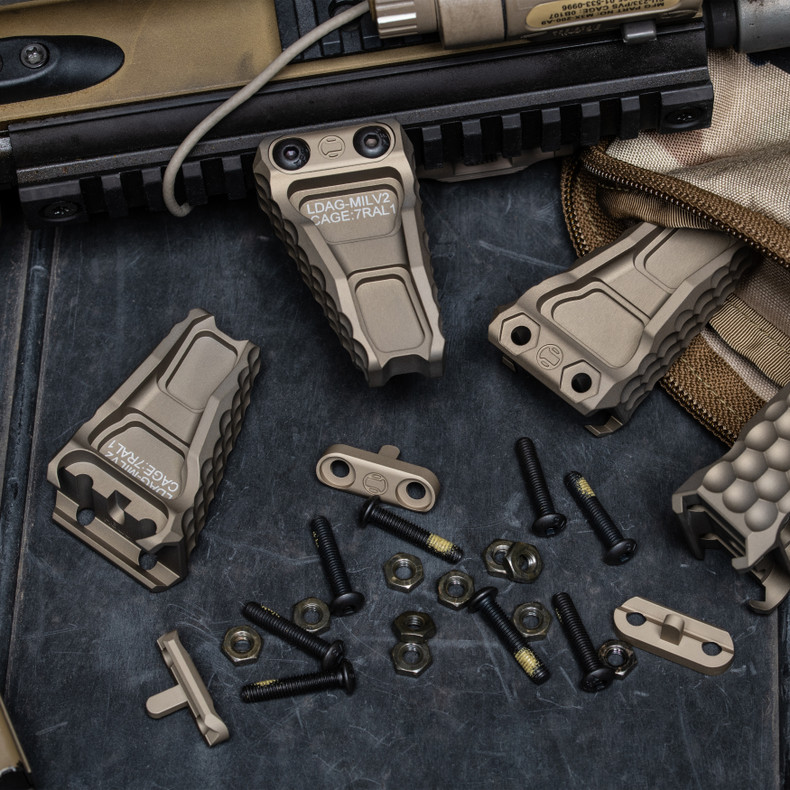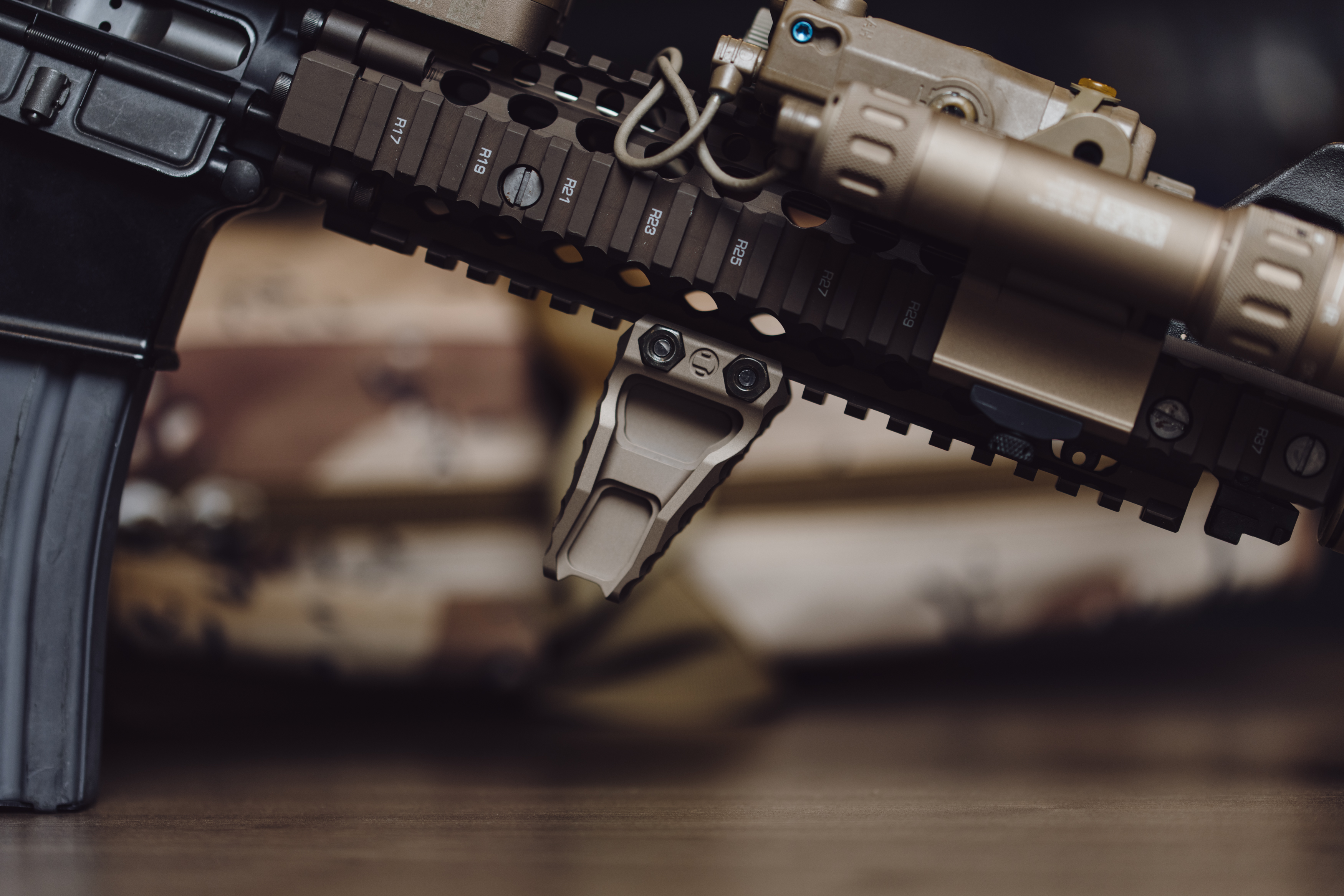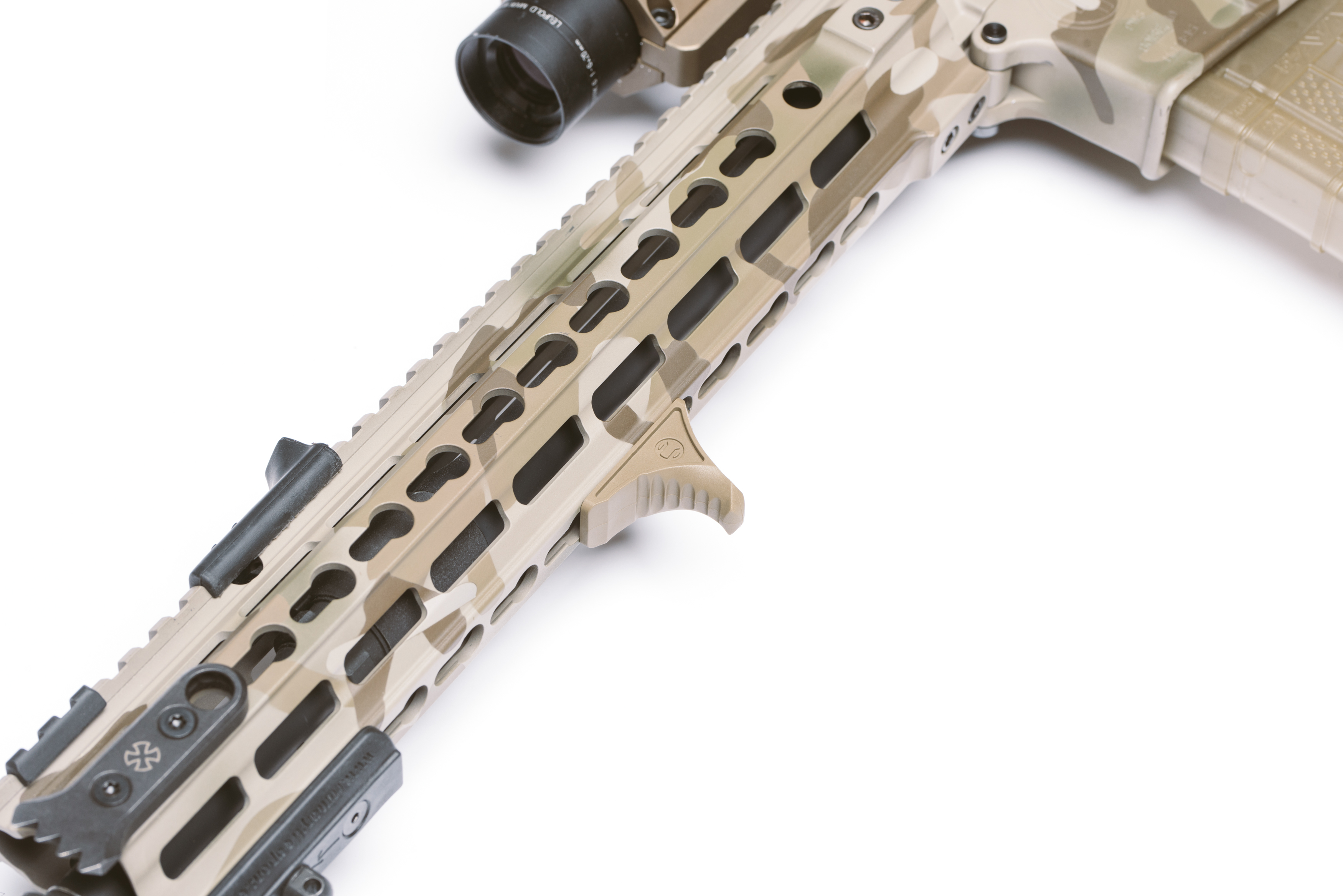Since Colt first released the AR-15 platform over 60 years ago, the weapon has seen numerous versions and iterations over the years. Many manufacturers have developed their own unique take on the AR-15 rail system, and much like other industries that use universal parts that maintain and adhere to standard specifications, the AR-15 is no different. As the AR-15 has evolved, so too have the components that make up the whole, and some of these upgrades offer enhanced shooting performance and aesthetic appeal to truly customize the weapon to the individual end-user. This evolution occurred in both the military and private sectors, with new products being offered at a rapid clip, but few have had the same impact as the shift from Picatinny to Keymod and later MLOK for the AR-15 rail system.
The Evolution Of The AR-15 Rail System
The AR-15 itself, at least as far as the firing mechanism, hasn’t changed much since it’s inception. A bullet still gets chambered, the firing pin still hits a primer that ignites a powder charge that sends the bullet down a rifled barrel at varying feet per second. The rifle is still fed through a detachable box magazine that holds a variable amount of ammo depending on the size. Almost every internal mechanism of the AR-15 functions in the same basic way that it did upon its inception. What has changed, and drastically, is the rail and accessory attachment methods that have allowed the AR-15 platform to continue to be the weapon of choice for the modern shooter.
The original version of the AR-15 was manufactured with no method for attaching anything to the forend of the rifle. This meant the end user had no way to add a control-style grip for the support hand, no way to mount a flashlight to the rail, and virtually no way to “fit” the rifle to a specific user. This did eventually give way to the smaller, ribbed handguard that added some texture and grip surface, however, it wasn’t until Picatinny came along that AR-15 users had a solid attachment method for adding accessories to the rail. Though quite a bit bulkier than the plastic ribbed handguard, in addition to being less comfortable to handle, Picatinny did offer some important advancements and is still the standard method of attachment for the top rail of the AR-15 platform, as the uniform spacing and reliable quick-detach systems available for modern rifles are unmatched for optics and night vision gear attachment.
Keymod and The AR-15 Platform
The next step in the evolution of the AR-15 weapon platform was somewhat short-lived, however, it’s difficult to ignore the importance that the shift to Keymod brought to the industry. Keymod’s “slide and snug” attachment style is familiar to most, as it is commonly seen in industrial racks and elsewhere. Where Keymod really sets itself apart on the AR-15 platform, is for the first time there were rails that could have standardized attachment methods for handstops, vertical grips, angled grips, flashlights, and many more. Utilizing the Keymod system also allowed for a significantly lighter weapon, as it requires far less aluminum to make. However, the smaller and lighter Keymod rail system did have some unintended consequences that led to additional innovations across the industry.
RailScales Continues To Be At The Forefront Of AR-15 Accessory Innovation
While Keymod certain y set the stage for a host of new aftermarket AR-15 accessories to be released, it also created an issue with heat transfer from the barrel to the now very thin and light rail system. Companies like RailScales have released heat-absorbing AR-15 rail panels to compensate for this, and as the industry has shifted to the MLOK attachment system in the years since, they continue to release new and innovative products to attach to the rail system. The modern AR-15 system has reached a zenith on the private market, with MLOK allowing for all manner of new and innovative products to be developed. Time will tell if something new will come along and shift the market again, but one thing can be counted on, the AR-15 is here to stay.
FAQ: Understanding the Evolution of AR-15 Rails and Accessory Compatibility
Q: What are the major differences between Picatinny, Keymod, and M-LOK rail systems?
-
Picatinny uses standardized slots across the rail and is most common for optics.
-
Keymod was lighter but less structurally robust, with a unique "keyhole" mounting system.
-
M-LOK uses direct-to-slot mounting that reduces weight and increases rigidity — now considered the industry standard.
Q: Is M-LOK better than Keymod or Picatinny?
Yes, M-LOK is currently the most popular due to its strength-to-weight ratio, modularity, and industry-wide support from manufacturers like Magpul and RailScales.
Q: Can you still use Keymod accessories today?
Absolutely. While less common, Keymod is still supported by several manufacturers — including RailScales — and remains viable for those with legacy builds.
Q: What role do rail covers play in heat management?
G10-based covers, like those from RailScales, are essential for mitigating heat transfer from the barrel through thin, lightweight rails. They allow shooters to maintain a stable support-hand grip even after sustained firing.
Q: Can I use RailScales products on any AR-15 rail?
RailScales offers M-LOK, Keymod, and Picatinny-compatible accessories, including their flagship RailScales grip panels, vertical grips, handstops, and light mounts. Always verify the rail interface on your handguard before selecting.
RailScales Products That Evolved With the AR-15 Rail System
RailScales has evolved alongside the modern AR-15, offering high-performance solutions for every stage of rail innovation:
-
RailScales® G10 Panels
These CNC-machined grip panels were created in direct response to Keymod’s heat transfer issues. Built from heat-resistant FR4 (G10), they offer unmatched texture and hand protection, and are now offered in M-LOK formats as well. -
HTP® Scales (High Temp Polymer)
An affordable, lightweight variation of the original G10 panels. Same great texture options, offered in multiple colors and M-LOK footprint. -
Karve® and Karve-P™ Handstops
Available in both aluminum and polymer, these bidirectional indexing stops help shooters maintain perfect grip placement under stress. Compatible with both Keymod and M-LOK via RailScales’ patented COG™ system. -
RSBM-P™ Vertical Grips
Ideal for compact PDW-style setups. Lightweight polymer construction and a short profile make them ideal for modern M-LOK rails. -
LEAF® Fixed Sights
Engineered for integration with DBAL or ATPIAL laser systems on Picatinny top rails, freeing up critical real estate while retaining backup iron sight capabilities. -
Hardtop™ & Halftop™ Light Mounts
Designed specifically for M-LOK, these low-profile mounts integrate seamlessly onto slimmer rails like those found on MCX or SBR setups.




